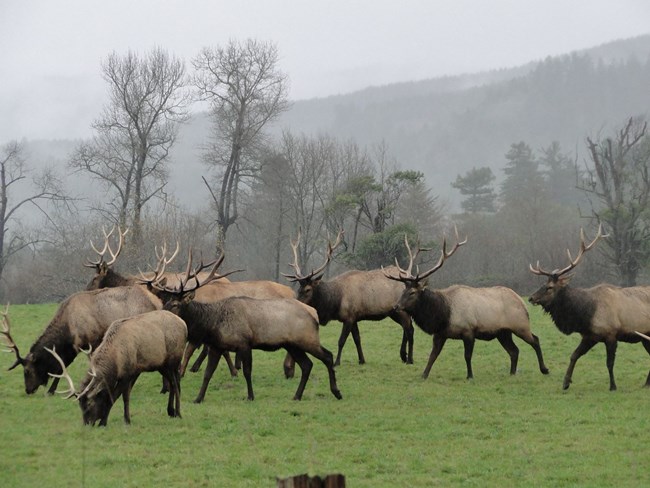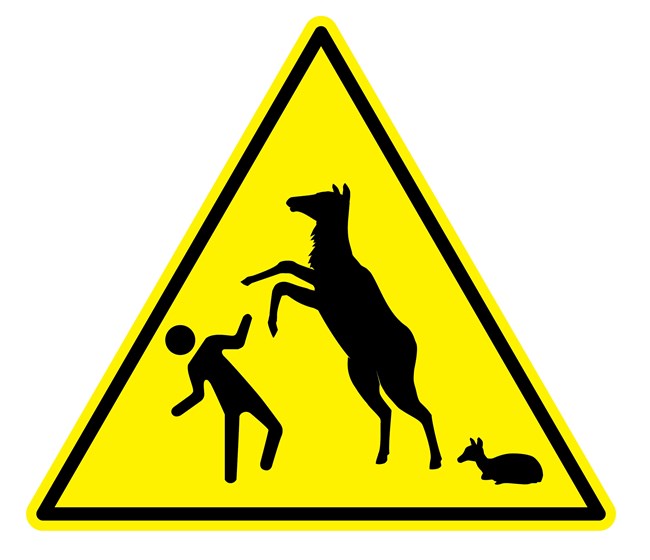
Photo / National Park Service Roosevelt ElkThe Roosevelt elk (Cervus elaphus roosevelti), is the largest of the six recognized subspecies of elk in North America; they once occurred from southern British Columbia south to Sonoma County, California. Today Roosevelt elk in California persist only in Humboldt and Del Norte Counties, and western Siskiyou County.
Seven elk herds call Redwood National and State Parks home, although at times these herds become loose aggregations of smaller groups. General herd locations are the Crescent Beach area, Gold Bluffs Beach and Prairie Creek Redwoods State Park, Elk Meadow, Lower Redwood Creek, park lands in the Orick Valley, and the Bald Hills. By 2018, an elk herd had moved into Orick, CA.
Elk management in Redwood National and State Parks mainly consists of keeping track of herds seasonally, especially during calving season (late May through June), and during the fall rut (late August through October), when elk are more likely to become aggressive toward humans. Park staff respond to any reports of close encounters between elk and humans. 
Photo / National Park Service Roosevelt Elk SafetyAs the largest subspecies of North American elk (bulls can weigh as much as 1,200 pounds), Roosevelt elk are a majestic sight, but can pose hazards depending on the season. Recommended viewing distance is 25 yards (75 feet), but for your safety, farther distances are recommended in the spring and fall. During calving season, late May through June, female (cow) elk may be extremely defensive of their young. Newborn elk calves may be hidden in vegetation out of view, sometimes near trails. As people approach, a cow may charge aggressively, and could rear up and lash out with her front legs. A single cow or groups of cows with calves should be given a very wide berth, as tempting as it may be to try to get that great photo of a newborn calf! During the fall rut, or elk breeding season, in late August through October males (bulls) become defensive and aggressive. At this time bulls gather their cows in groups, or harems. They may stomp and charge at both people on foot and vehicles. If you encounter a bull with his harem on a trail, slowly back away and find an alternative route.
If an elk charges
If you witness an aggressive elk, take note of the location and report it to a park ranger as soon as possible. |
Last updated: July 10, 2020
